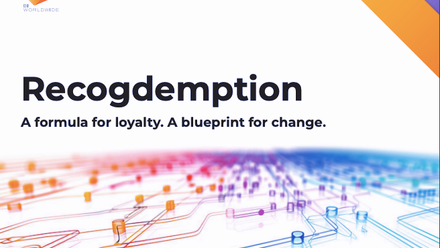Expert view: Reframing the gender pay gap - why culture, structure and mindset all matter
The gender pay gap isn’t just a workplace issue. It reflects how society values different types of work, life moments and contributions.
While we’ve made progress in recognising inequality, we still need to rethink the systems that sustain it.
The importance of job design
Too many roles are still designed around outdated assumptions, rewarding visibility over impact and penalising difference.
When flexibility is only accessible in lower-paid, lower-status roles, we reinforce the idea that people must choose between career and care, health and progression, or presence and purpose.
This is the key issue the EU Pay Transparency Directive aims to address.
Policies enforcing a return to the office five days a week, limited childcare options paired with the high cost of living, a lack of shared parental leave, and bias in things like promotion policies are all directly impacting pay and opportunity.
A thriving modern workplace requires flexibility by design. It must be built into roles at all levels, not bolted on as a perk. It is not just about when or where we work, but how work gets done.
Telling women to follow rigid time management routines as a solution only shifts the burden back onto individuals to make inflexible systems work, rather than challenging the systems themselves.
We need to design roles that support success without burnout or penalty, with space to adapt and breathe. We also need to move beyond the idea that meaningful work only happens between 9 and 5.
If we want people to show up fully for caring responsibilities, life moments and wellbeing, how we design time, trust and flexibility must evolve.
A cultural shift in pay
We also need to address the structural, societal and cultural patterns that shape pay. Roles predominantly held by women, in care, early education and administration, continue to be undervalued.
Historical underpayment is often reflected in market data, as seen in multiple legal cases and referenced in the EU Pay Transparency Directive.
While market benchmarks provide context, using them in isolation can reinforce outdated norms. Justifying pay gaps on market data alone may no longer stand up to scrutiny. Fortunately, many organisations are now building on external benchmarks with internal equity assessments to develop salary ranges and more transparent frameworks.
Why role perception still matters
Even with job levelling in place, perception still matters.
When a finance director and a customer success director sit in the same room, who is seen as more valuable? Despite being at equivalent levels, roles associated with traditional power and prestige often carry more weight. But this is not just about how men view roles.
As women, we also need to reflect on how we support and speak about one another. Bias can be inherited without question. If we want better, we must lead by example.
The solution is not found in pay strategy alone. It lies in how we talk about success, how we measure impact and how we challenge assumptions about ambition, commitment and competence.
We need to reframe the gender pay gap, the narrative on equal pay and the structures that support everyone in the workplace.
This is a cultural shift, not a compliance exercise. And like any shift, it brings commercial and talent implications. Reviewing how we value roles and structure pay may spark difficult conversations, but the long-term outcome is a more equitable, engaged and future-fit workforce.
The recent UK debate on pay transparency, with some warning it may disengage good people, shows just how sensitive and personal these shifts can be. But discomfort is often a signpost for growth. Getting this right takes thoughtful, inclusive leadership.
We all have a role to play
Culture is not created by policy alone. It is shaped in our everyday decisions, in how we recruit, reward and recognise others and in the conversations we have and those we avoid.
Closing the gender pay gap is not about detraction. It is about intention. Pay cannot fix everything, but it can shine a light on where change is most needed.







